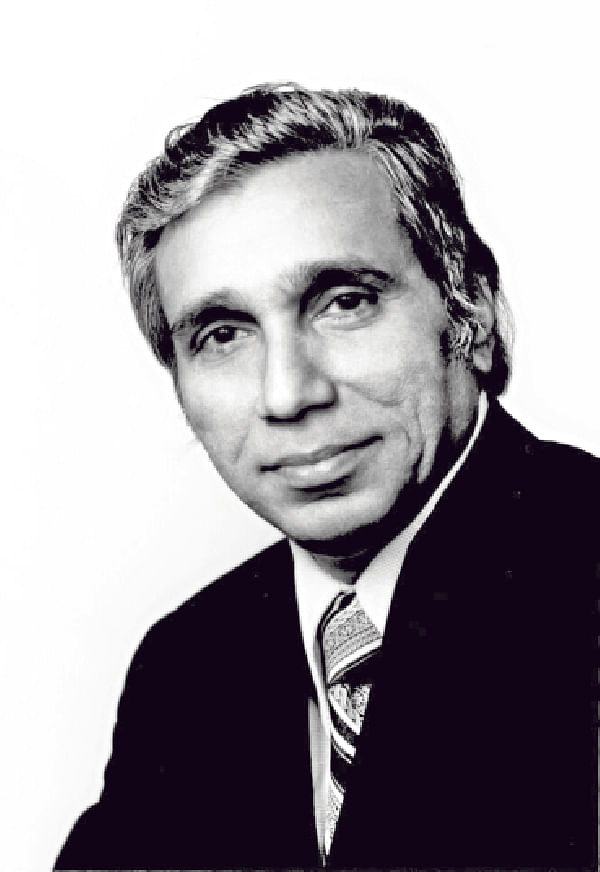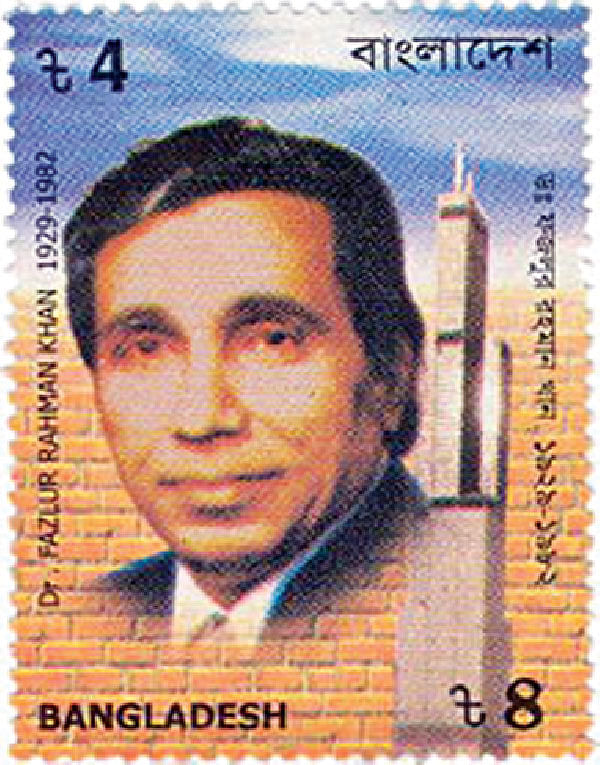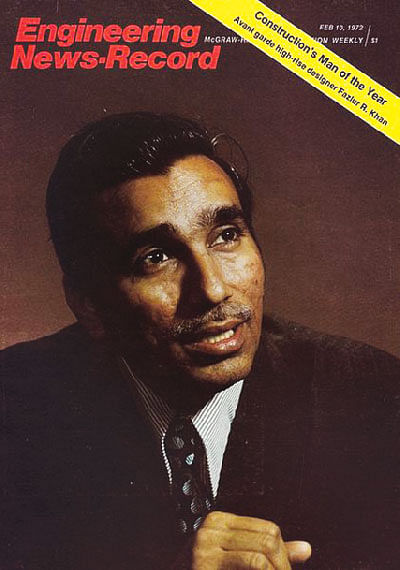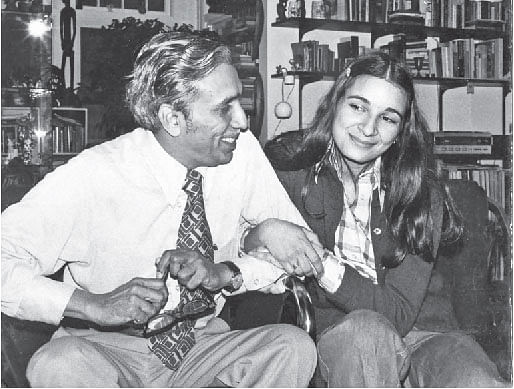Building Dreams

Fazlur Rahman Khan (1929-1982) is one of the most significant figures in the history of architecture. He is the father of Tubular Structure of the high-rises that has changed the course of modern architectural design. He is also the pioneer of computer aided design. We remember the contributions of this brilliant Bangladeshi on his 32nd death anniversary.
Fazlur Rahman Khan was born on April 3, 1929 in Dhaka, Bangladesh
He received his Bachelor of Civil Engineering degree from Ahsanullah Engineering College (Now Bangladesh University of Engineering and Technology)
He received a Fulbright Scholarship and a Pakistan government scholarship and went to the US for higher studies in 1952
In three years, Khan earned two Master's degrees and a PhD in structural engineering
Fazlur Khan's central innovation in skyscraper design and construction was the idea of the "tube" structural system for tall buildings
Khan's tubular designs have dominated skyscraper construction design since the 1960s
The first building to apply the tube-frame construction was the DeWitt-Chestnut Apartments building that Khan designed and was completed in Chicago, in 1963
For this unique design, it has been told that Khan has enabled human beings to work and live in the sky


Sears Tower (now Willis Tower), engineered by Khan, was the tallest building in the world for over two decades
Fazlur Khan designed several notable structures that are not skyscrapers
Examples include the Hajj terminal of King Abdulaziz International Airport, completed in 1981, which consists of tent-like roofs that are folded up when not in use
Khan also designed the King Abdul Aziz University, the United States Air Force Academy in Colorado Springs and the Hubert H Humphrey Metrodome in Minneapolis
He was also the pioneer of computer aided design (CAD) used in structural engineering

Fazlur Khan was cited five times among "Men Who Served the Best Interests of the Construction Industry" by Engineering News-Record
In 1972 he was named "Construction's Man of the Year"
He was also honoured with the Aga Khan Award for Architecture "for the Structure of the Hajj Terminal, An Outstanding Contribution to Architecture for Muslims"
He was also heavily involved in creating public opinion and garnering emergency fund for Bengali people during the 1971 Bangladesh Liberation War
Khan died on March 27, 1982


 For all latest news, follow The Daily Star's Google News channel.
For all latest news, follow The Daily Star's Google News channel. 



Comments